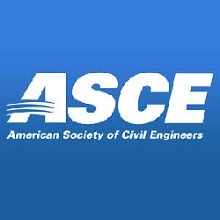
شمول ژئوفوم برای کاهش نیروی غیرفعال بر مجاورت پل بر مبنای آزمون های مقیاس بزرگ
چکیده
به منظور کاهش فشارهای جانبی زمین بر سازه ها، منطقه ای از مواد متراکم و یا یک "توده ای از " را می توان به عنوان یک مانع برای کاهش فشارهای جانبی زمین بر سازه ها مورد استفاده قرار داد. مواد تراکم معمولاً پلی استایرن و یا ژئوفوم منبسط هستند. رهنمودهای اندکی درباره توسعه نیروی غیرفعال با یک توده اوجود دارد. برای بررسی این موضوع، آزمایشات نیروی غیرفعال در مقیاس بزرگ با توده ای از ژئوفوم و بدون آن که به عنوان یک مانع بین خاک پُشت ریز یا خاکریز و یک تکیه گاه پل شبیه سازی شده عمل می کند، انجام پذیرفت. وجود توده ای از ژئوفوم منجر به کاهش نیروی غیرفعال تا 70 درصد نسبت به پُشت ریز یا خاکریز ماسه به تنهایی می گردد. اگر چه به نظر می رسد نیروی اندازه گیری شده و هندسه گسیختگی زمانی که تنها از پُشت ریز یا خاکریز ماسه استفاده می گردد، با یک مکانیسم مارپیچ لگاریتمی مطابقت داشته باشد اما توده ای از ژئوفوم هندسه گسیختگی را به یک مکانیزم گسیختگی رانکین تبدیل می کند. این امر نشان می دهد که ژئوفوم در راستای کاهش اصطکاک رابط بین دیوار و ماسه پُشت ریز یا خاکریز عمل نموده و در نتیجه مقاومت غیرفعال کاهش می یابد.
مقدمه
منطقه ای از مواد متراکم یا "توده ای از" به عنوان مانعی برای کاهش فشارهای جانبی زمین بر سازه ها مطرح شده اند (هوروات، 1997). مواد متراکم معمولاً پلی استایرن منبسط (EPS) می باشند که ژئوفوم نیز خوانده می شوند. اگر چه تاثیر توده ای ازهای ژئوفوم در مورد فشار فعال زمین مورد بررسی قرار گرفته است (ارتوگرول و تراندافیر، 2012؛ ارتوگرول و تراندافیر، 2012؛ هوروات، 1997) اما آزمون های معدودی پیش از این به بررسی اثر توده ای ازهای ژئوفوم بر فشار غیر فعال زمین پرداخته اند (باتورست و زرنانی 2013؛ هوروات، 1997). در بعضی موارد مجزا ساختن سازه پل و دیواره های تکیه گاه از نیروی غیر فعال پُشت ریز یا خاکریز ممکن است مطلوب باشد. به عنوان مثال، در صورت آبگونگی یا روانگرایی در یک لایه ماسه زمینه ای، جابجایی های گسترش جانبی می تواند باعث توسعه نیروی غیرفعال علیه تکیه گاه شده و در نتیجه خاک پُشت ریز یا خاکریز به سمت تکیه گاه پل بلغزد. از سویی دیگر، نیروهای دینامیکی حاصل از بارگذاری زلزله ساکن می تواند موجب حرکت سازه به سمت خاک پُشت ریز یا خاکریز و وارد آمدن فشارهای غیر فعال بزرگ بر دیواره پشت کار گردد.
Abstract
To decrease lateral earth pressures on structures, a zone of compressible material or an “inclusion” can be used as a barrier to decrease lateral earth pressures on structures. The compressible material is typically expanded polystyrene or geofoam. Little guidance is available on the development of passive force with an inclusion. To explore this issue, large-scale passive force tests were conducted with and without a geofoam inclusion acting as a barrier between the backfill soil and a simulated bridge abutment. The presence of the geofoam inclusion reduced the passive force by 70% relative to the sand backfill alone. Although the measured force and failure geometry appeared to conform to a log-spiral mechanism when only sand backfill was used, the geofoam inclusion transforms the failure geometry to a Rankine failure mechanism. This suggests that the geofoam acted to reduce the interface friction between the wall and the backfill sand thereby reducing the passive resistance.
INTRODUCTION
A zone of compressible material or an “inclusion” has been proposed as a barrier to decrease lateral earth pressures on structures (Horvath 1997). The compressible material is typically expanded polystyrene (EPS), also known as geofoam. Although the influence of geofoam inclusions has been investigated for the case of active earth pressure (Ertugrul and Trandafir 2012; Ertugrul and Trandafir 2012; Horvath 1997), very few tests have previously been conducted to examine the effect of geofoam inclusions on passive earth pressure (Bathurst and Zarnani 2013; Horvath, 1997). In some cases, it might be desirable to isolate the bridge structure and abutment walls from the passive backfill force. For example, in the event of liquefaction in an underlying sand layer, lateral spread displacements could cause passive force to develop against the abutment as the overlying backfill soil slides towards the bridge abutment. Alternatively, dynamic forces from inertial earthquake loading could cause structural movement towards a soil backfill leading to large passive pressures on the backwall.
چکیده
مقدمه
هندسه آزمون تکیه گاه شبیه سازی شده
نتایج آزمون بار
تجزیه و تحلیل نتایج آزمون
نتیجه گیری
Abstract
INTRODUCTION
GEOMETRY OF SIMULATED ABUTMENT TEST
LOAD TEST RESULTS
Analysis of Test Results
CONCLUSION
- ترجمه فارسی مقاله با فرمت ورد (word) با قابلیت ویرایش، بدون آرم سایت ای ترجمه
- ترجمه فارسی مقاله با فرمت pdf، بدون آرم سایت ای ترجمه
